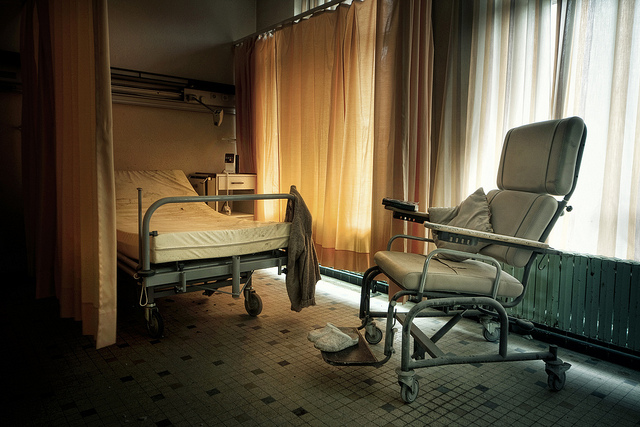Most of us shudder at the idea of being hospitalized or living in a long-term care facility. As people age, it is understandable that their most common goal is to be at home as long as possible. And as people experience health care in inadequately funded hospitals across the country, the prospect of facing deteriorating health in a public institution becomes even more unnerving. It is in this context that the Ontario government released their new plan for home care on May 13, “Patients First: A Roadmap to Strengthen Home and Community Care.”
This plan uses comforting language like “self-directed care” for patients and “shared values” with care-givers. It also appears to include substantive improvements such as increased funding for home and community care and wage increases for Personal Support Workers (PSW).
According to Ross Sutherland, a former home-care nurse and chair of the Ontario Health Coalition, “The home care system is currently a mess. There is no right to care for patients or clients. There is no community control or democracy… we want to raise a warning with the Minister of Health that in some serious ways his reforms could make things a lot worse if the perils of privatization, market-modelled home care and austerity are not avoided.”
Last year, I had some personal experience with this situation when my in-laws had very intense dealings with the health-care system. After a major and complicated operation, my partner’s 82-year-old father was sent home to be nursed by his 80-year-old mother. I argued with the hospital staff who were organizing his discharge and was repeatedly told that every issue I raised would be dealt with by “home care.”
And while a nurse did come to administer his IV medication, no one came or phoned about changing his dressings, bathing or managing the tubing on his post-surgical catheter. When I called the Community Care Access Centre (CCAC) responsible for his home care, the case manager told me that he would be entitled to two hours of care a week. The rest was up to his 80-year-old wife. This is the reality of home care in Ontario. Downloading services that should be publicly provided and accessible onto family members, predominantly women.
Unsurprisingly, my in-laws visited many emergency wards in the weeks and months that followed.
I asked the CCAC, quite emphatically, what other programs or supports my partner’s parents might be eligible for and was given the numbers of private agencies we could pay out of pocket for. I recall hearing activists in the 1990s predict this situation. Governments were widely touting home care as the solution to “inefficient” hospitals, blatantly exploiting people’s understandable desire to be cared for at home while opening the door to privatization.
There’s a tired mantra that’s often hauled out around health care: “you can’t just throw money at the problem.” And then everyone nods, as if this is self-evident. And I would agree in this instance, that the home-care system in Ontario does not simply require more funding going to CCACs, which the Toronto Star’s Bob Hepburn aptly describes as “fiefdoms,” where “salaries of top CCAC executives have soared dramatically while incomes of front-line care workers have stagnated or in many cases actually fallen.”
But what if one of the problems is underfunding? What if more money meant nurse practitioners were not mandated by budgets and quotas to send people home before they’re ready? What if instead, their quotas were based on the quality of life of patients determined through their recoveries? What if home-care triage could determine how many hours patients needed to be adequately supported at home rather than simply informing patients’ families that only two hours are budgeted?
Funding decisions are not made in a sacred economic dome of truth. Politics is humans judging priorities for other humans. While increases to home-care funding are welcome, they do not make up for hospital cuts that are leading to far too many early discharges, particularly for seniors. And while this budgeting in hospitals is done in the name of “efficiency,” this situation also leads to many re-admittances when things fall apart at home, re-admittances which are inefficient for both the health of patients and hospital budgets. The Liberals offered raises to PSWs who are in the public system with one hand, and created conditions that force people to hire non-unionized PSWs with the other.
If we can’t collectively determine that by the time our fellow humans become octogenarians our priority is supporting them in the lives they choose to live — rather than relegating them to roles like “man-who-waits-for-bath” or “woman-who-is-now-24/7-nurse” — then how can we claim to have achieved anything as a community? Is this the ending we should all be willing to anticipate? It is impossible for anyone to escape the inevitable breakdown of our bodies, but not everyone is equally vulnerable to the limits of a public health system that is in ongoing crisis for those who cannot comfortably pay out-of-pocket for auxiliary care.
Julie Devaney is a health, patient and disability activist based in Toronto. Her rabble column, “Health Breakdown,” is an accessible, jargon-free take on the politics behind current health-care stories. You can find her on Twitter: @juliedevaney
Photo: [AndreasS]/flickr



